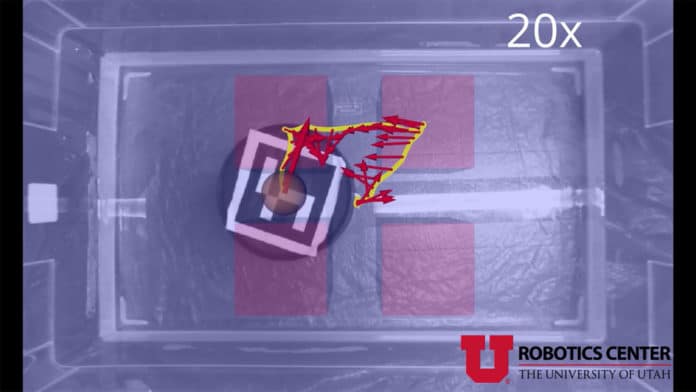Almost above 27,000 pieces of space junk- bigger than the size of a softball- currently orbiting Earth. Cleaning up this space junk is an essential task to send more rockets to space.
Now, mechanical engineers at the University of Utah have discovered a method of manipulating orbiting space debris. The method involves the use of spinning magnets.
With this technology, robots could one day gently maneuver the scrap to a decaying orbit or further out into space without actually touching it, or they could repair malfunctioning objects to extend their life.
University of Utah mechanical engineering professor Jake J. Abbott said, “The concept involves moving metallic, non-magnetized objects in space with spinning magnets. When the metallic debris is subjected to a changing magnetic field, electrons circulate within the metal in circular loops, like when you swirl your cup of coffee, and it goes around and around.”
While the idea is not new, but the fact is using multiple magnetic-field sources in a coordinated manner moves the objects in six degrees of movement, including rotating them.
Before, it was only known how to move them in one degree of movement, like just pushing them.
Abbott said, “What we wanted to do was to manipulate the thing, not just shove it but manipulate it as you do on Earth. That form of dexterous manipulation has never been done before.”
With this method, scientists could stop a damaged satellite from wildly spinning to repair it. Previously, it was not possible.
It also allowed scientists to manipulate fragile objects.
Abbott says, “this newly discovered process could be used with a spinning magnet on a robotic arm, a stationary magnet that creates spinning magnetic fields, or a spinning super-conductive electromagnet like those used in MRI scanners.”
Engineers tested this approach using a series of magnets to move a copper ball on a plastic raft in a tank of water. The magnets moved the sphere not only in a square but also rotated the ball.
Abbott believes this principle of manipulating non-magnetic metallic objects with magnets could also have applications beyond clearing space debris.
Journal Reference:
- Lan N. Pham, Griffin F. Tabor, Ashkan Pourkand, Jacob L. B. Aman, Tucker Hermans, Jake J. Abbott. Dexterous magnetic manipulation of conductive non-magnetic objects. Nature, 2021; 598 (7881): 439 DOI: 10.1038/s41586-021-03966-6
